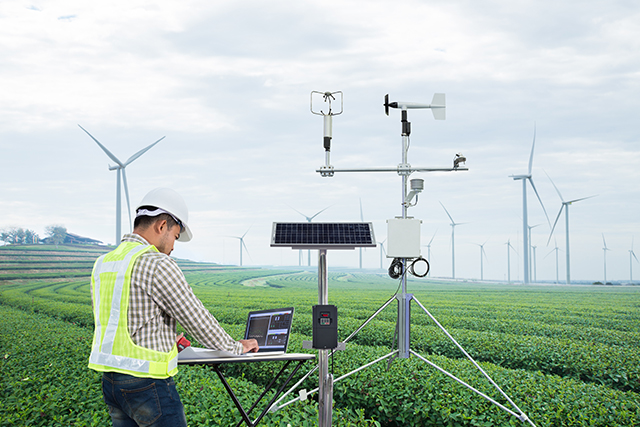Forecasting Wind Patterns Using Machine Learning
January 6, 2021Machine learning (ML) has been integrated into many aspects of daily life, including smart devices, social media, spam filtering, and web-based language translators. Now machine learning is being used to help the environment, by predicting wind patterns.
While wind farms are a great source of green energy, they are often not as cost effective as other sources of electricity, in large part due to being unable to predict future wind patterns. This is particularly important in energy markets where assets are scheduled a day ahead.
“Google and the Google-owned Artificial Intelligence firm DeepMind combined weather data with power data from 700 megawatts of wind energy that Google sources in the Central United States,” reported by Jeff McMahon in Forbes. “Using machine learning, they have been able to better predict wind production, better predict electricity supply and demand, and as a result, reduce operating costs.”
As a result of implementing machine learning, revenue for wind farms has increased by 20%, through three different ways: better prediction of wind power production, better prediction of electricity supply and demand, and operational cost savings.
“This approach also helps bring greater data rigor to wind farm operations, as machine learning can help wind farm operators make smarter, faster and more data-driven assessments of how their power output can meet electricity demand,” says DeepMind staffers Carl Elkin and Sims Witherspoon, in a blog post.
Since the wind itself cannot be forced into set patterns, ML has found a way to take the unpredictable and add some stability. The hope for DeepMind is that the cost benefits will ultimately strengthen the business case for wind power and encourage adoption of carbon-free energy around the world.
Wind forecasting has been a priority of the Department of Energy since 2015, largely in an effort to improve reliability. Google’s goals are more broad – they aim to have an energy portfolio that is free of carbon, without requiring purchasing carbon offsets.
Machine learning is also being used in wind energy production through condition monitoring of wind turbines, predictive maintenance, and predicting power output.
Machine learning has been used for other green energy efforts beyond wind energy. With smart technology, like thermostats and digital home assistants, information can be gathered to automatically turn devices on and off and adjust temperature based on usage.
Even the historically unpredictable weather forecast has benefitted from machine learning. IBM’s subsidiary, The Weather Company, uses ML and artificial intelligence to process data from millions of world-wide sensors, as well as in-flight sensors. IBM supercomputers process 400 terabytes of data every day to provide 26 billion forecasts world-wide, with a reported 200% improvement in forecasting resolution.
Capitol Tech offers bachelor’s, master’s, and doctoral degrees in both computer science and data science. Both areas of study include coursework in machine learning. For more information, email admissions@captech.edu.



